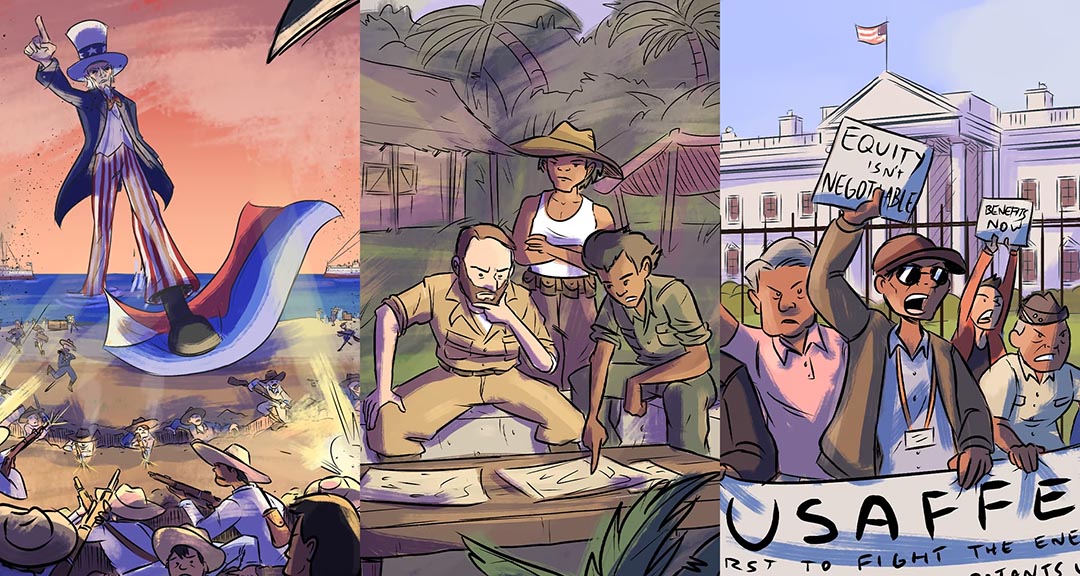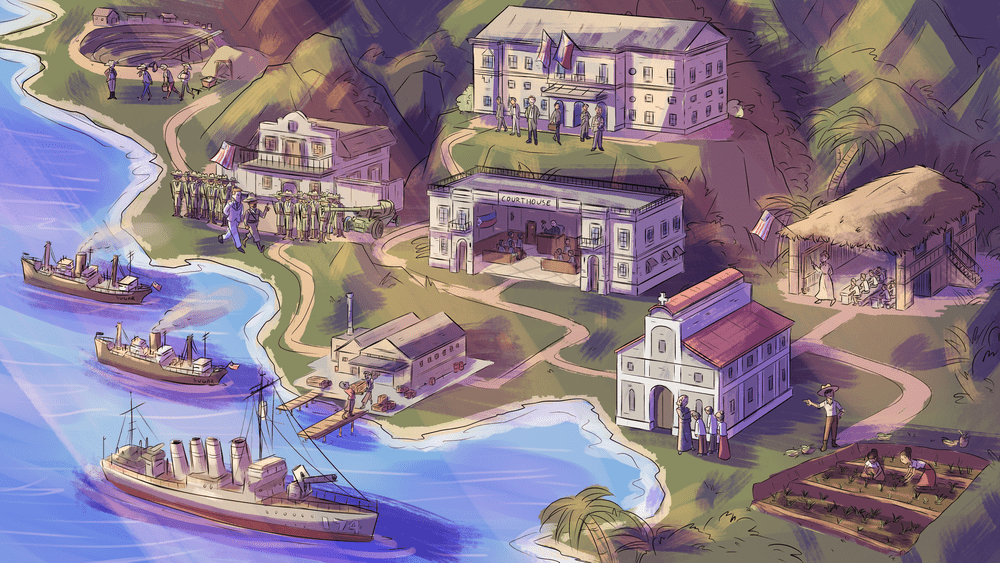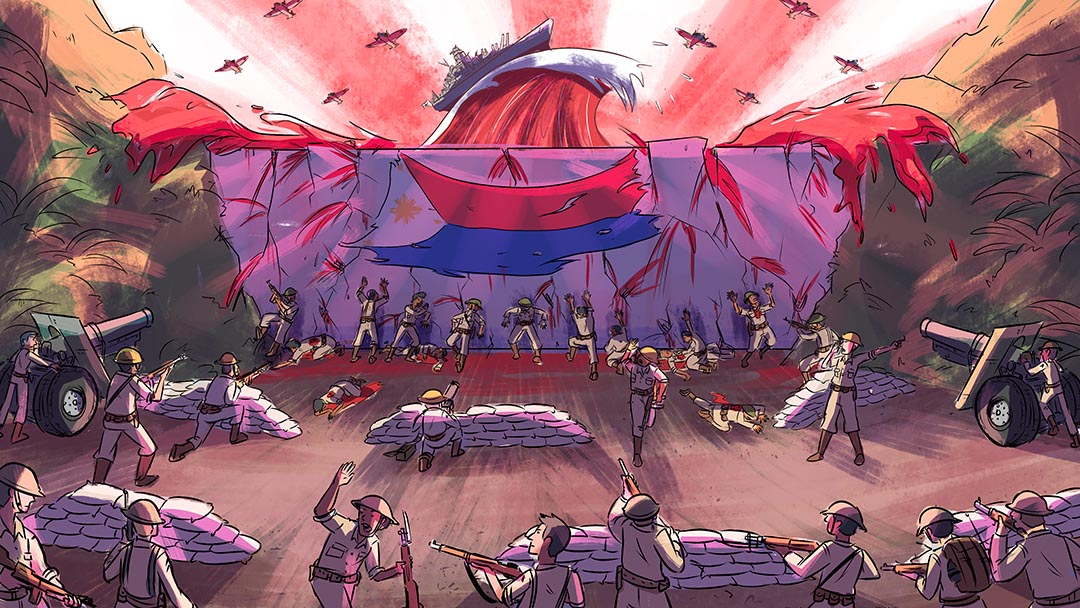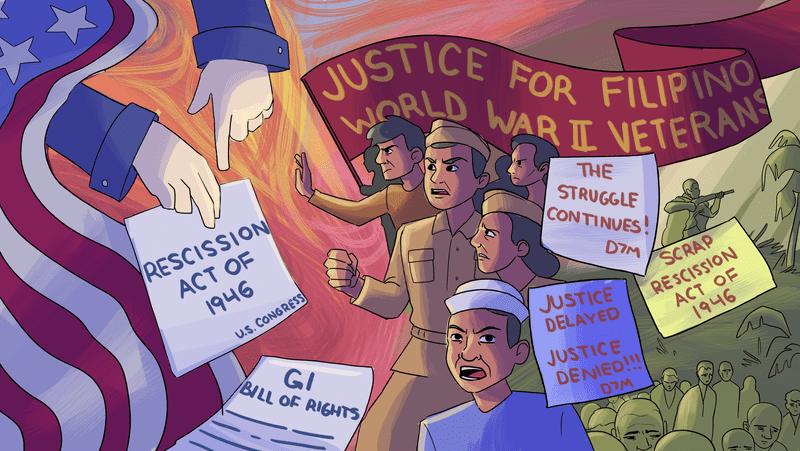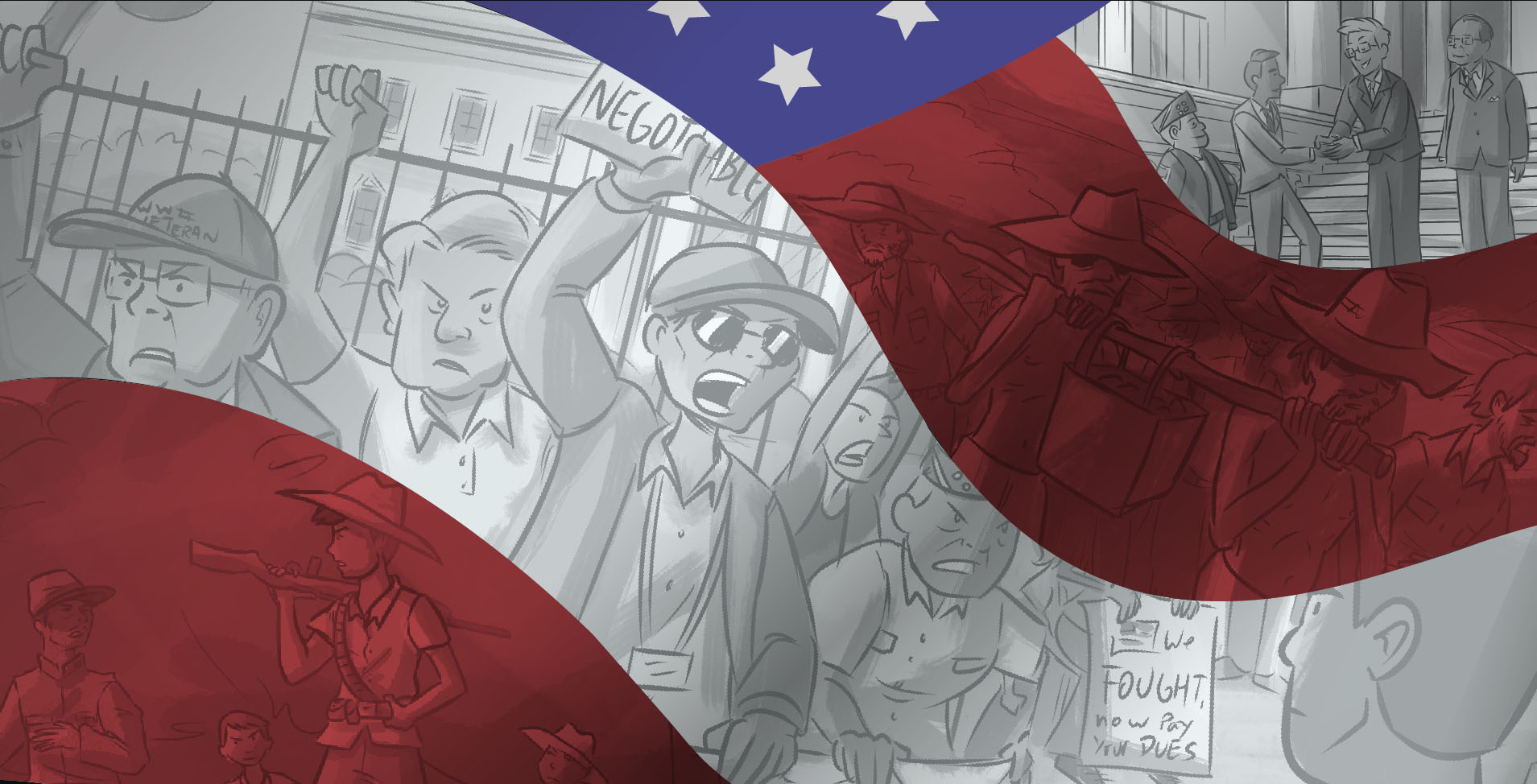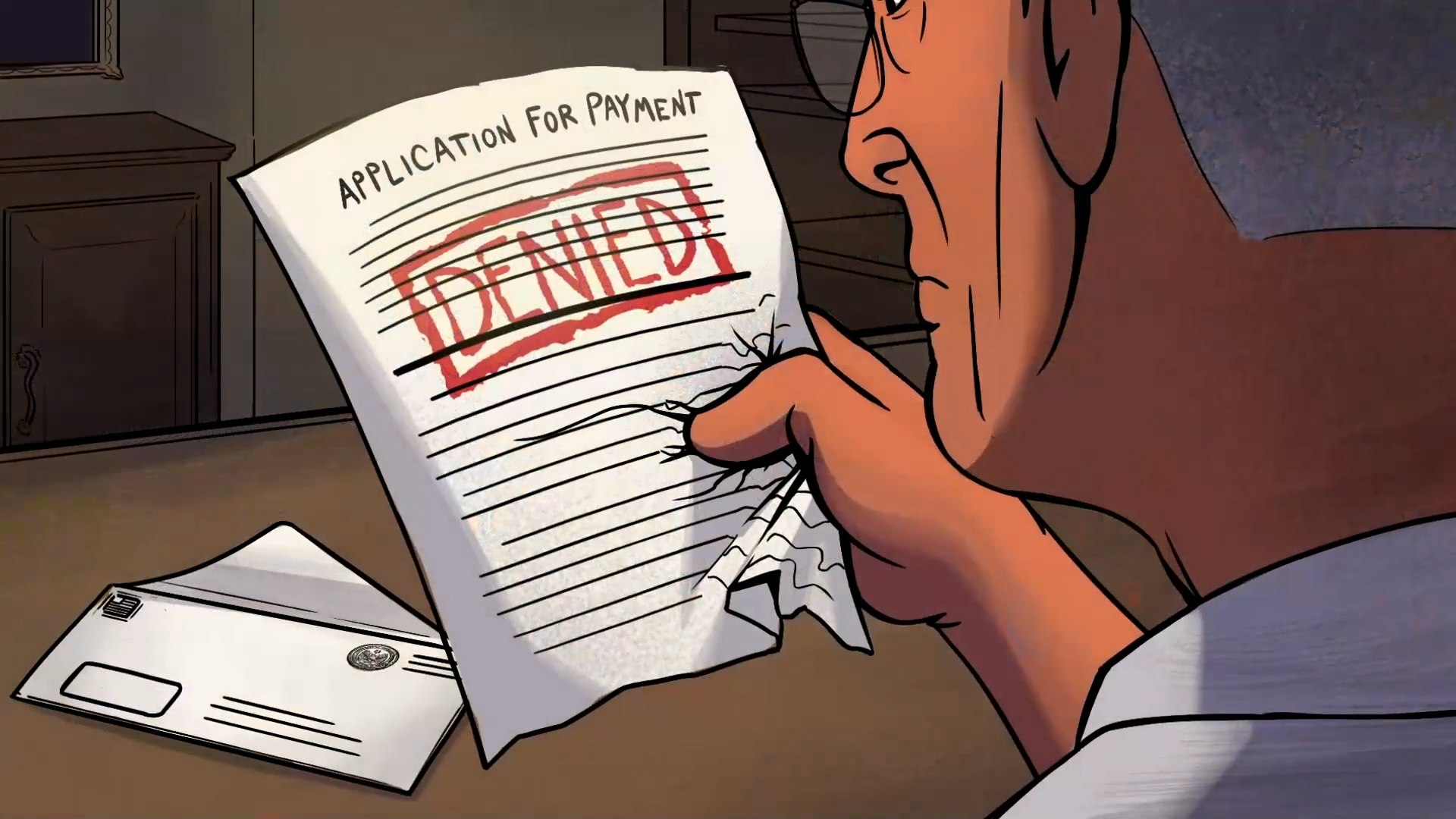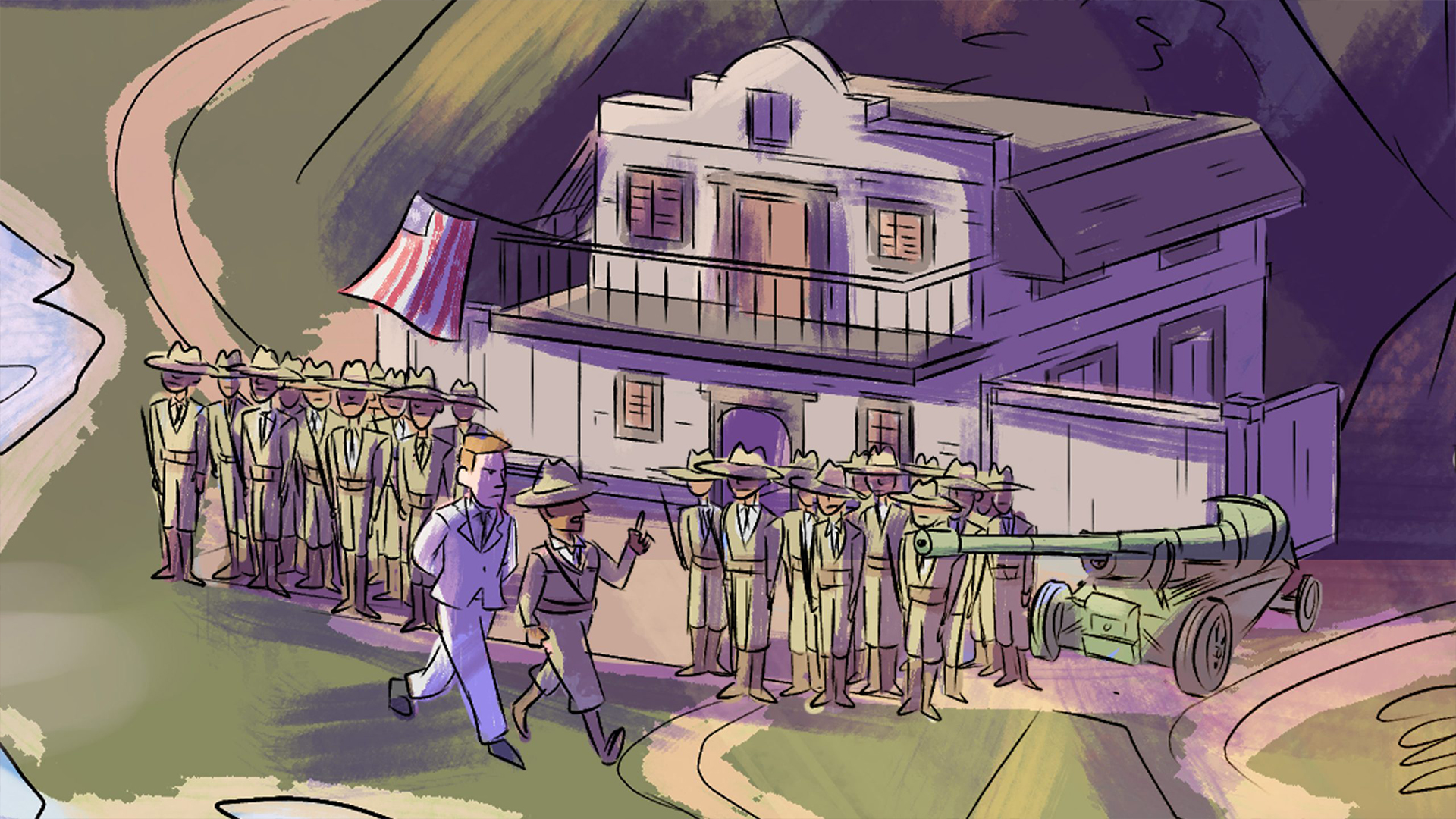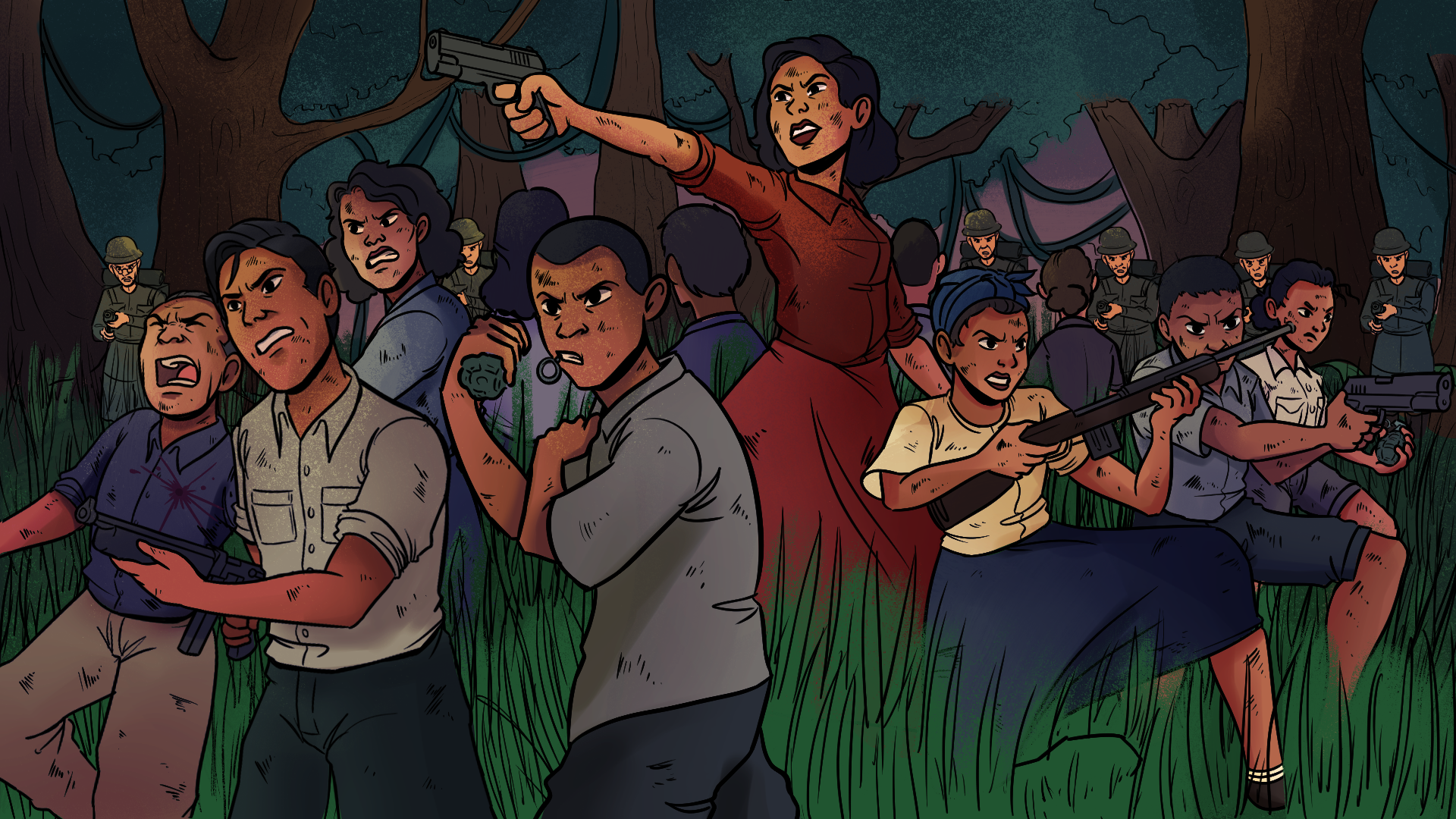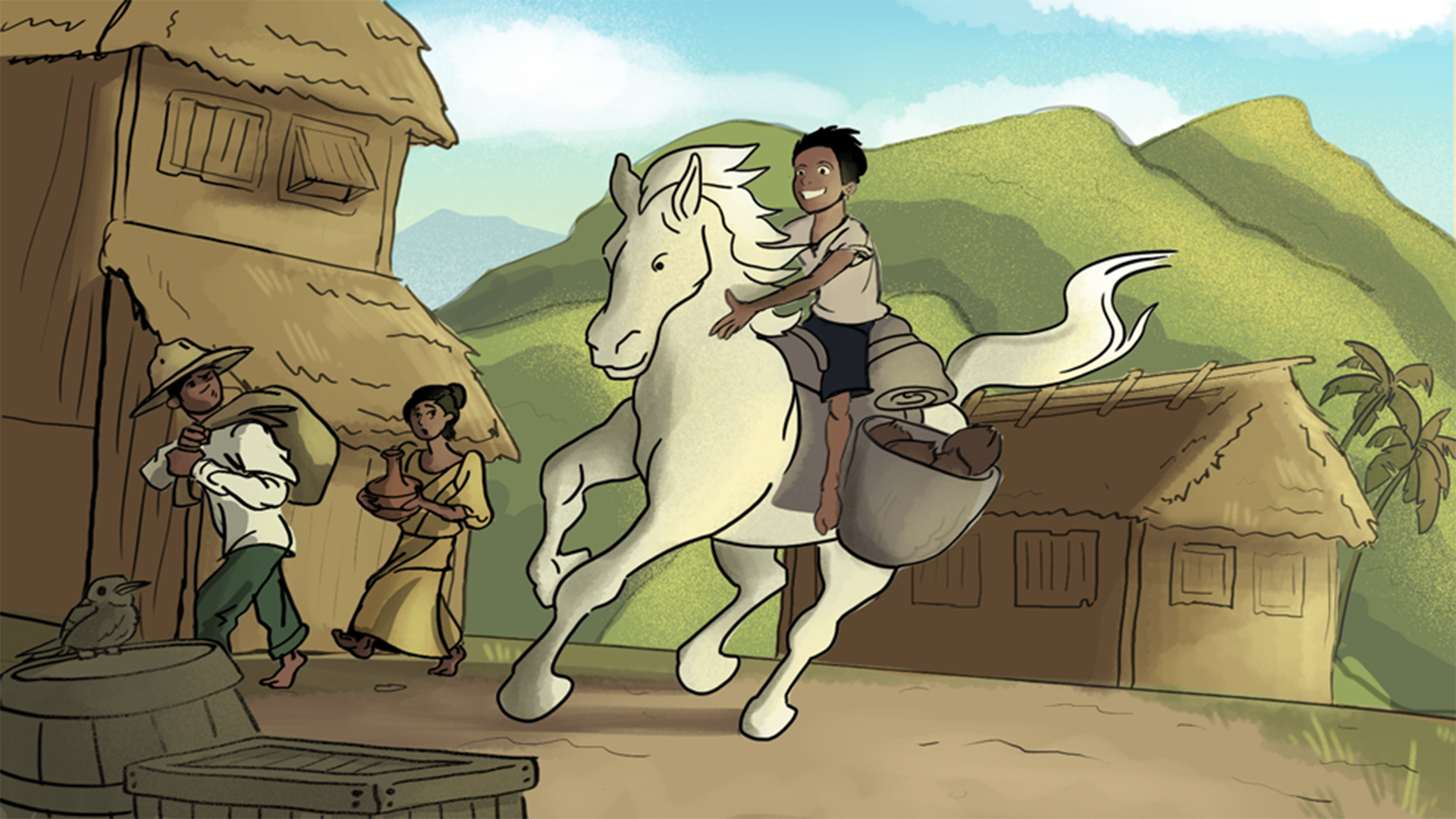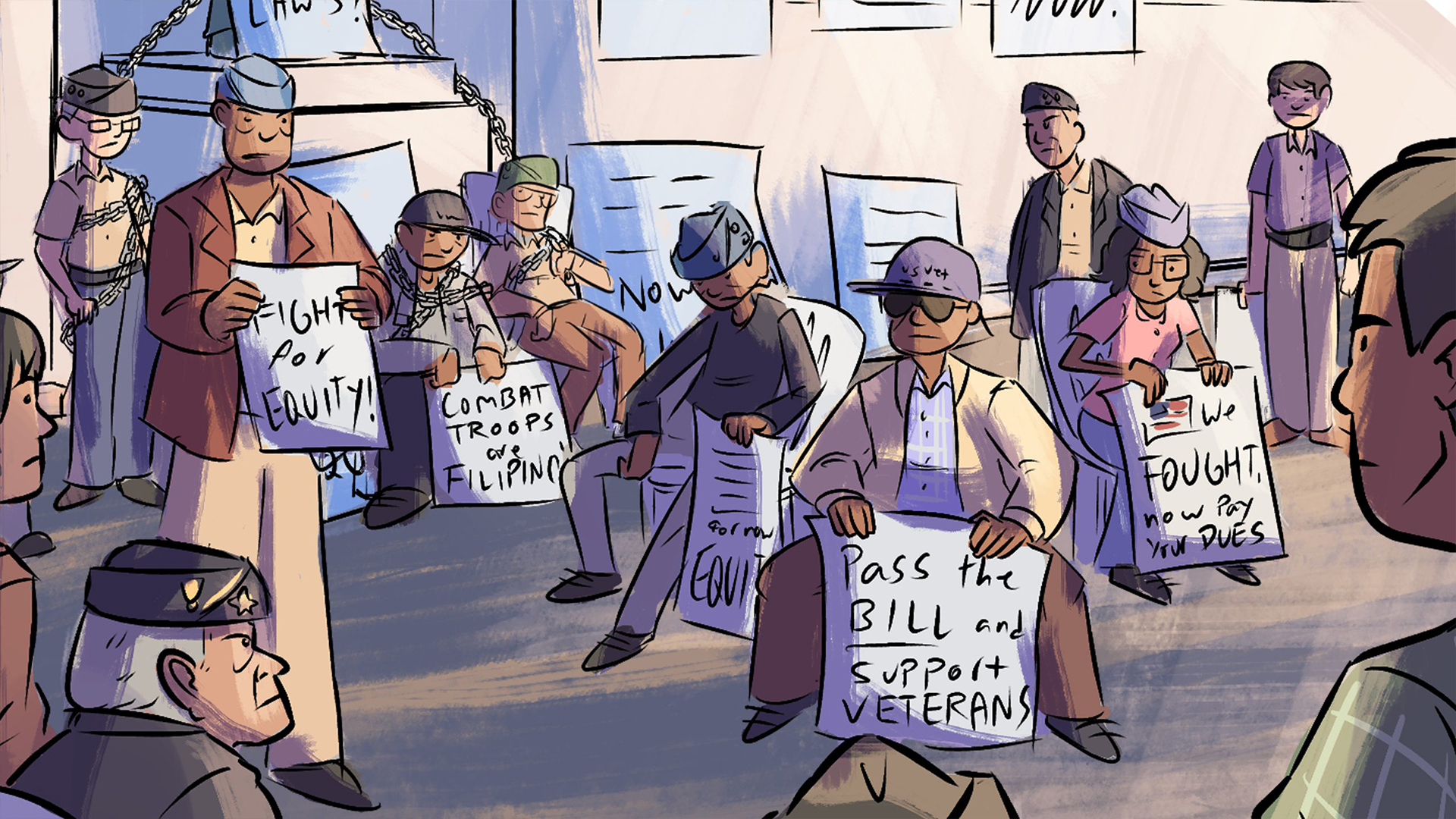Lesson Plans
Lesson plans are designed to take one to three class periods and use constructive pedagogies and hands-on activities that ask students to synthesize a mix of primary sources, exhibit text, oral histories and other historical information. Lesson plans include instructions, materials, and optional extensions to connect the lessons to other subject areas (world history, Asian American Studies) or deepen students’ critical thinking.

1. Teaching with Duty to Country
This resource guide overviews the mix of interviews, primary sources, animations and illustrations, videos and profile cards found on the Duty to Country website and in the Under One Flag exhibit and includes suggestions for how to teach with them.
2. Confronting U.S. Imperialism in the Philippines
Students review six primary sources to learn how U.S. presence shaped life in the Philippines during the colonial period, then create an illustration to synthesize what they learned.
3. Filling in the Picture: World War II in the Philippines
Students use the online exhibit and illustrations to trace the course of World War II in the Philippines, then look for a primary source that “fills in the picture.”
4. Putting the Rescission Act on Trial
Students prepare for and conduct a mock trial of the 1946 Rescission Act by reviewing up to 14 primary sources to find evidence; can be adapted to create a DBQ.
5. You Decide: Filipino Veterans’ Long Fight for Justice
Students read scenarios and debate what to do at each of five key turning points in the long civil rights movement for Filipino veterans’ benefits and recognition.
6. Comparing the G.I. Bill and the Rescission Act
Students read a short text and complete a graphic organizer to compare and contrast two key laws that affected World War II veterans; includes suggested adaptations for lower-level readers.
7. Defining Imperialism in the Philippines
In this lesson for middle school, students define imperialism and analyze the illustration to identify ways the U.S. exerted influence in the Philippines during the colonial period.
8. Filipino Guerrillas: What Were They Fighting For?
Students learn about the motivations and experiences of Filipino guerrillas during World War II by exploring the online exhibit Under One Flag and other sources, then write a first-person narrative from the point of view of a guerrilla.
9. Who Were the Guerrillas?
In this lesson, designed for middle schoolers, students define guerrilla and identify types of guerrilla service, as well as challenges and successes of World War II guerrilla fighters in the Philippines.
10. You Decide: Filipino Veterans’ Long Fight for Justice (Modified)
This is a shorter version of “You Decide,” adapted for middle school and/or lower-level readers; students read scenarios and debate what to do at three key turning points in the veterans movement to gain benefits.
Share your thoughts about the Duty to Country Curriculum
We invite educators to share their feedback on the Duty to Country curriculum. This survey asks about where and what you typically teach, and for your feedback on the educator materials themselves. We estimate it will take 15 minutes to complete the survey. Thank you for your time, your feedback helps us make Duty to Country stronger.

